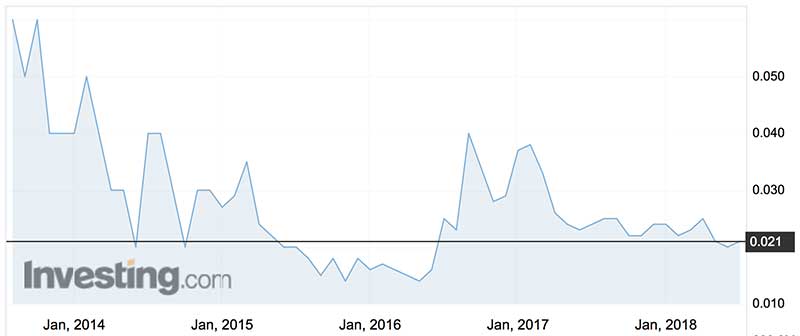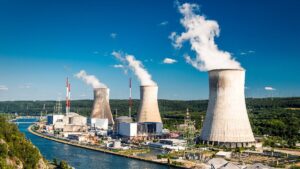Aura moves closer to overseas IPO to fund uranium-to-vanadium pivot

Pic: John W Banagan / Stone via Getty Images
Barry FitzGerald writes his legendary Garimpeiro resources column weekly for Stockhead
Polymetallic orebodies are the chameleons of the mining industry.
The Haggan deposit in Sweden owned by Aura Energy (ASX:AEE) is a classic example.
Right up until the Fukushima nuclear accident in 2011 knocked the stuffing out of the uranium market, Haggan was ranked as one of the world’s biggest undeveloped uranium deposits.
And it still is.
But the collapse in uranium prices following Fukushima put paid to Haggan’s 800m/lb uranium resource hitting the market anytime soon.
Worse still, Sweden has since banned uranium mining. Years of work and some $30 million in advancing the Haggan project was all in vain, or so it seemed.
Thanks to the hand-over-fist increase in vanadium demand and prices, Haggan is back on the drawing boards — this time as a vanadium project.
“Orebodies can change before your very eyes,’’ Aura executive chairman Peter Reeve told Stockhead.
“And that is what has happended at Haggan. While uranium prices have crashed, the rise in vanadium prices from $US3/lb to $US17/lb in the last couple of years has changed the project in to something else.’’
The vanadium component of the Haggan orebody now represents about 80 per cent of the value of each tonne of ore. It is a complete reversal from the previous situation where uranium was the key metal.
Vanadium’s price strength reflects the new steel reinforcement construction standards in China that require a doubling of vanadium use, and the strong growth forecast for vanadium redox flow batteries for grid-scale storage and dispatch of renewable energy.
The Haggan pivot from uranium to battery metals is not restricted to vanadium as the polymetallic wonder of Haggan means it also comes with significant values for other battery metals – cobalt, nickel and copper.

Thanks to the previous uranium-focused orebody definition and study work over the years, Aura’s battery metals ambition has got off to a flying start.
It was able to announce a high-grade resource estimate in May of 49m/t grading 0.42% for 430m/lbs of vanadium.
Aura is now working on a scoping study, which is looking at a project potentially capable of producing 5 per cent of current global consumption for 15 to 20 years.
It is interesting stuff for a company trading at 2.1c for a market cap of $22m, particularly when the scale and advanced nature of Haggan as a vanadium project is compared with those held by 15 junior peer companies valued at between $9m and $320m.
December IPO
Aura is out to have more of Haggan’s value reflected in its market cap by listing a new company on either the London or Toronto markets to take up the running on the project.
It plans to offer 20 to 30 per cent of the company to new investors in an initial public offering in the December quarter, with Aura shareholders to have an entitlement offer in the new company, Vanadis Battery Metals.
Uranium is still a key part of Aura’s future as it remains committed to a $US45 million development of its Tiris uranium project in Mauritania when uranium markets improve, possibly in 2019-20. A definitive feasibility study in to the Tiris development is due by the end of the year.
Reeve said the company remained a true believer in uranium but needed to be doing other things while the wait for uranium price recovery continues.
Apart from the pivot to vanadium at Haggan, the company has stepped up its presence in Mauritania by adding a gold and base metals exploration leg to its story.
It has secured 105 sq km of greenstone belt tenements early in 2017, which have had little exploration. The geology is similar to Western Australia’s goldfields but without the crowds.
Early exploration has given encouragement with both high-grade gold and nickel-cobalt hits encountered.
The country’s greenstone belts are best known for the 21m oz Tasiast gold mine owned by Canada’s Kinross.
UNLOCK INSIGHTS
Discover the untold stories of emerging ASX stocks.
Daily news and expert analysis, it's free to subscribe.
By proceeding, you confirm you understand that we handle personal information in accordance with our Privacy Policy.








